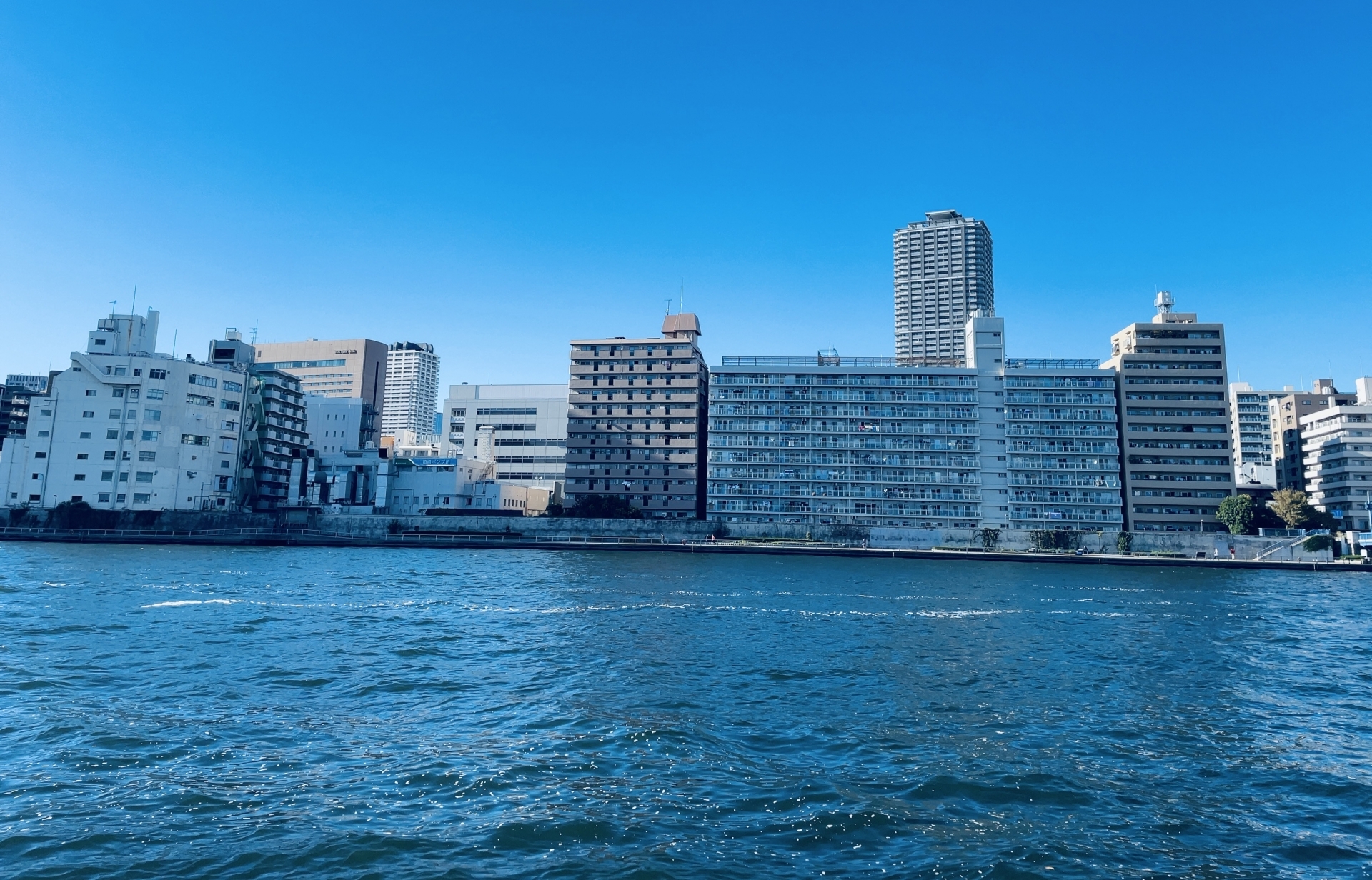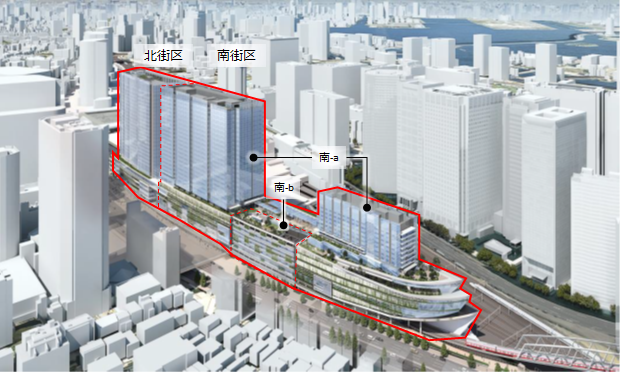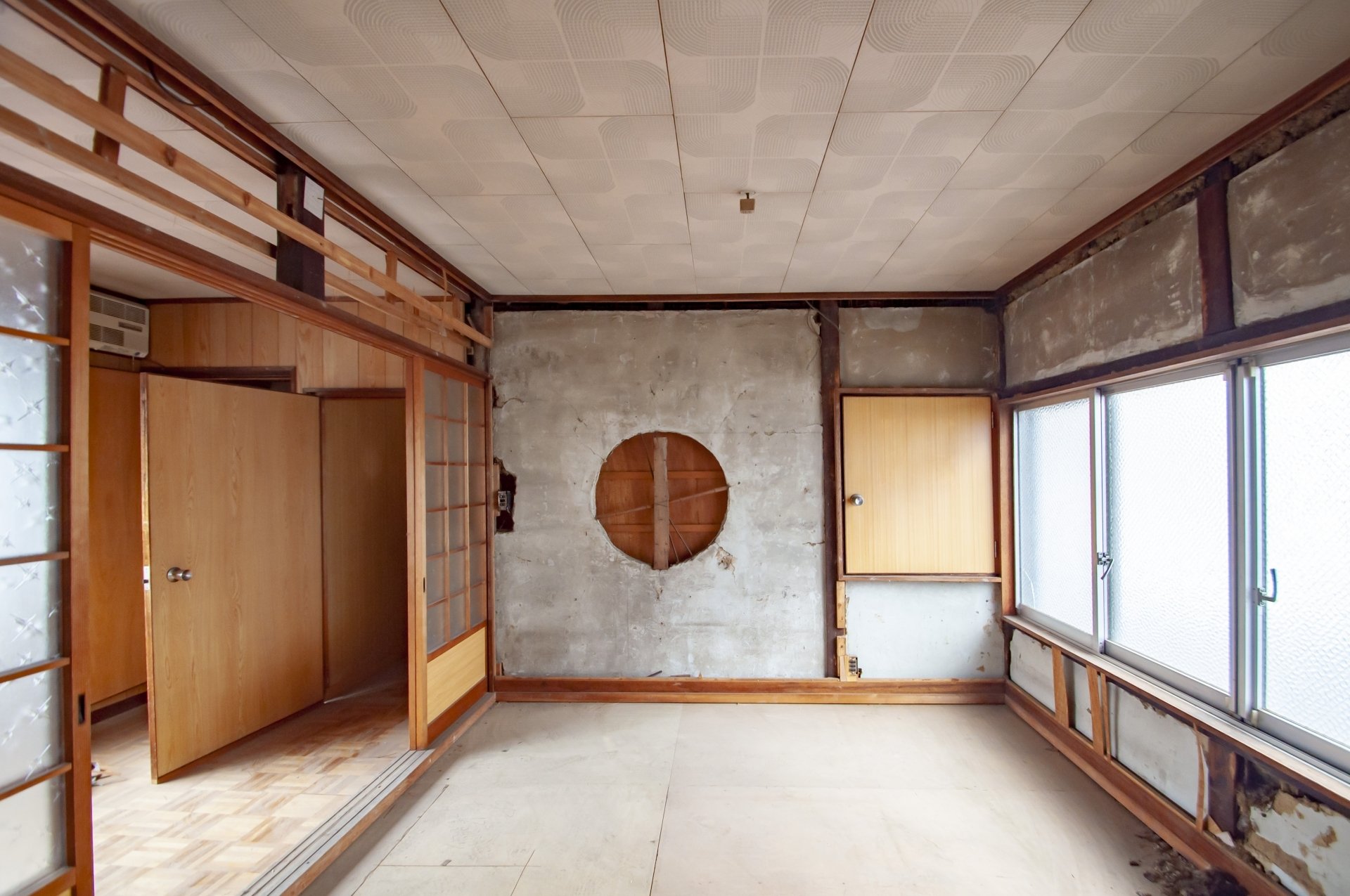In recent years, Japan's real estate market has been attracting significant attention from overseas investors, particularly from the United States. This trend is driven by several factors, including Japan's stable economy and legal framework, which provide a sense of security, as well as relatively high yields, low interest rates, and the benefits of a weak yen. In particular, the historical weakness of the yen has made Japanese real estate appear undervalued to investors holding strong currencies such as the US dollar. In fact, foreigners' purchases of real estate have surged due to the weak yen and the revival of tourism demand, with active acquisition of properties in Tokyo and Hokkaido. Globally, Tokyo is projected to become the world's top city in terms of real estate investment in 2024, with significant international capital inflows into the Japanese market. These trends indicate that the Japanese real estate market presents an attractive investment opportunity for U.S. investors.
This article provides a detailed explanation of the benefits of investing in Japanese real estate from the perspective of U.S. investors, key success factors, risks to consider, the latest market trends, tax incentives, and foreign exchange risks. Based on this analysis, we will logically and persuasively introduce the importance of selecting INA&Associates Co., Ltd. as a partner for Japanese real estate investment and the benefits of doing so.
1. Characteristics of the Japanese Real Estate Market and Current Trends
The Japanese real estate market is a mature market that has enjoyed stable growth for many years, with a high degree of transparency and well-established legal systems. Recent trends show a clear trend of gradual price increases. As of 2024, the size of the Japanese real estate market is estimated to reach approximately $436 billion, and is projected to grow to $557 billion by 2033. The national average land price also increased by 2.7% year-on-year in January 2025, marking the fourth consecutive year of increase. This growth rate is the highest since 1991, indicating a steady recovery after a long period of stagnation.
The Japanese real estate market is characterized by high transparency and stability. The legal system is well established, and there are almost no restrictions on foreigners purchasing real estate. For example, foreigners can own land and buildings in Japan on the same basis as Japanese nationals, and there are no visa or residency requirements. This open legal framework allows overseas investors to invest with confidence.
Recent market trends show that prices are on the rise, particularly in urban areas. In 2024, the residential price index in the Tokyo metropolitan area rose by approximately 8.14% year-on-year, demonstrating steady growth. In 2025, real estate prices in Tokyo are expected to rise by 5-6% annually, with growth rates for luxury properties projected to reach 6-7%. In Osaka, the supply of new condominiums increased by 15% year-on-year, indicating high demand in major regional cities. Meanwhile, price increases are also evident in core cities and tourist destinations in rural areas, with some cities such as Fukuoka showing growth rates exceeding those of Tokyo. This is due to factors such as the spread of teleworking, which has led to migration to rural areas, and the recovery of tourism demand, expanding investment opportunities from the Tokyo metropolitan area to the rest of the country.
The rental market is also booming. As of the first quarter of 2025, the average rental yield nationwide was approximately 4.2%, which is a healthy level, and residential rents in Tokyo's 23 wards rose 6.4% year-on-year. The occupancy rate of rental housing in Tokyo is extremely high at 96.6%, confirming that the risk of vacancies is low. New housing supply is trending downward (housing starts in 2024 decreased by 1% year-on-year, and in January 2025 by 4.6%), and the supply-demand balance is becoming tighter. If supply shortages and increasing demand continue, there will be upward pressure on rents and prices in the medium to long term, creating a favorable environment for investors.
Additionally, foreign capital inflows are expanding. Driven by the weak yen, real estate investment from overseas reached over 10 billion dollars in the first half of 2024 alone, a 45% increase from the previous year. As of the third quarter of 2024, Japan's real estate investment reached approximately 3.85 trillion yen, a 41% increase from the same period last year, with Tokyo leading the world in real estate investment. Another strength of the Japanese market is the high liquidity resulting from the influx of domestic and foreign capital, which has led to active trading.
In summary, the Japanese real estate market is an attractive investment destination for U.S. investors due to its reliable legal system and stable market growth. The next section will delve deeper into the specific investment benefits.
2. Investment Benefits (Stability, Legal Framework, Yield, Inflation Resistance, etc.)
Investing in Japanese real estate offers numerous benefits, including:
(1) Political and economic stability and well-developed legal system: Japan is a politically and economically stable country with well-established protection of property rights. Contract and registration systems are strict and transparent, allowing investors to invest in an environment where ownership and income rights are securely protected. As mentioned earlier, there are no special restrictions on foreign ownership of real estate, and U.S. investors enjoy the same rights as Japanese nationals. This legal stability provides a safe investment foundation compared to emerging markets where political instability and contract risks are a concern.
(2) High market liquidity and abundant investment opportunities: Not only major cities like Tokyo and Osaka, but also regional hubs and resort areas offer a wide range of property types, including office buildings, commercial facilities, residential properties, hotels, and logistics facilities. Tokyo ranks among the world's largest markets in terms of transaction volume, and investment demand for major cities remains very high. Additionally, Japan has a well-developed real estate investment trust (J-REIT) market, with J-REITs offering an average dividend yield of 3.5–5.5%. J-REITs are legally required to distribute over 90% of their profits as dividends, making them popular among overseas investors seeking stable returns. Furthermore, the Japanese J-REIT market is becoming increasingly transparent each year, earning the trust of institutional investors. Whether through direct real estate investment or securitized products, the variety of options available is an attractive feature.
(3) Attractive yields and stable income gains: Japanese rental real estate is renowned for its low vacancy rates and stable rental income. For example, residential properties in central Tokyo have an occupancy rate of over 96%, which is extremely stable, and rents have been increasing year-on-year (up 6.4% from the previous year). On the other hand, in major U.S. cities, vacancy rates and rent fluctuations can be significant depending on economic cycles. Japan's rental market, however, maintains a good supply-demand balance overall, with many properties offering an average surface yield of approximately 4–5%. This figure is on par with the declining bond yields in advanced economies and real estate yields in other countries in recent years. Additionally, Japan has maintained a low-interest-rate policy for an extended period, offering the advantage of low borrowing costs. By leveraging real estate with low-interest loans, it is possible to enhance the return on investment (ROI) relative to the amount of capital invested.
(4) Resistance to inflation: Japan has experienced low inflation or deflation for several decades, but in recent years, the rate of price increases has begun to rise. In this environment, real estate serves as a hedge against inflation as a tangible asset. Real estate prices and rents tend to rise during inflationary periods, helping to offset the erosion of currency value. In fact, while Japan's inflation rate rose in 2024, real estate prices (particularly in urban areas) showed even stronger growth. Additionally, even in a situation where a weak yen is expected to lead to rising import prices, overseas investors can benefit from currency diversification by holding yen-denominated assets. Holding yen-denominated assets alongside dollar-denominated assets can also help reduce overall portfolio risk from an international diversification perspective.
(5) Exchange Rate Benefits and Diversification Effects: Let's also touch on exchange rates. Purchasing yen-denominated assets when the dollar is strong and the yen is weak allows investors to benefit from exchange rate gains if the yen appreciates later. For example, there are forecasts that the yen could weaken to around 150 yen per dollar in the early 2020s and then correct to the 130 yen range by the first half of 2025 in a yen-appreciation trend. If such yen appreciation were to occur, the value of Japanese assets denominated in dollars would increase. Of course, exchange rate fluctuations are a double-edged sword, but by utilizing the hedging strategies discussed later, it is possible to aim for the ideal profit-taking strategy of purchasing during yen weakness and selling during yen strength. Additionally, since the economic cycles of Japan and the United States do not necessarily move in tandem, holding assets in both countries can help mitigate economic downturn risks.
As outlined above, investing in Japanese real estate offers the potential for both a stable foundation and attractive returns, making it a strategic asset diversification option for U.S. investors. However, risks are inherent in any investment. The next section will explain the anticipated investment risks and their countermeasures.
3. Investment Risks and Countermeasures (Exchange Rate Risk, Management Risk, Cultural and Legal Differences)
All investments involve risks. We will outline the main risks that U.S. investors should be aware of when investing in Japanese real estate, along with countermeasures.
(1) Currency Risk:
Risk: Since Japanese real estate is denominated in yen, fluctuations in the yen-dollar exchange rate can affect investment returns. If purchased during a period of yen weakness and the yen continues to weaken during the investment period, the value of assets and rental income denominated in U.S. dollars may decrease. Conversely, yen appreciation may expand profits, but this depends on market conditions. Exchange rates fluctuate based on factors such as interest rate differentials and economic conditions between the U.S. and Japan. For example, as of 2024, the yen was weakening due to differences in monetary policy between the Federal Reserve and the Bank of Japan, but there are forecasts that the yen may strengthen in 2025 due to policy changes by the Bank of Japan and improvements in Japan's current account balance. Such fluctuations often exceed investors' expectations and can lead to “unexpected losses” or “unanticipated gains.”
Countermeasures: Foreign exchange risk can be mitigated through hedging measures. Specifically, forward contracts or option transactions can be used to fix future yen-selling/dollar-buying rates, thereby preventing foreign exchange losses. Additionally, aligning the borrowing currency with the investment currency is also effective. For example, when purchasing Japanese properties, taking out a yen-denominated loan from a Japanese bank ensures that income and repayments are denominated in yen, thereby isolating the impact of exchange rate fluctuations. Furthermore, for long-term investments, focusing on the average exchange rate over the entire investment period rather than temporary fluctuations can be effective. Ultimately, exchange rate risk cannot be completely eliminated, but it can be controlled within manageable limits through appropriate hedging and funding plans.
(2) Property Management and Operations Risk:
Risk: Managing Japanese properties from a remote location involves operational burdens and costs. Specifically, for rental properties, this includes a wide range of tasks such as tenant recruitment, rent collection, contract renewals, handling complaints, and arranging repairs. Handling these tasks independently without familiarity with the local language and customs can be challenging. Additionally, familiarity with Japan-specific business customs (such as the key money and deposit system) and tenant protection rules under the Land and Building Lease Act is essential. Inadequate management may result in risks such as prolonged vacancies leading to reduced returns or deteriorating building conditions that diminish asset value.
Countermeasure: The best way to address this risk is to partner with a reliable real estate management company. By outsourcing operations to a professional management company, you can entrust them with everything from daily operations to emergency responses. For example, INA offers next-generation rental management services such as 24/7 tenant support, cloud-based information sharing, and AI-driven optimal rent setting. Management fees are transparent and reasonably priced (INA charges a flat monthly rate of 1,100 yen per unit), ensuring quality that meets the standards of international ultra-high-net-worth investors. When owning properties in Japan from overseas, selecting a management partner with such reliability and track record can significantly reduce operational risks.
(3) Risks due to cultural and legal differences:
Risks: Business culture and legal practices differ between the United States and Japan. For example, real estate transaction contracts are often in Japanese as the official version, and Japan has unique procedures such as seals (official seals) and revenue stamps. Additionally, it is common for real estate companies to act as intermediaries in transactions, and property information is shared through the REINS real estate information network, which differs from the U.S. MLS (Multiple Listing Service) system. Legally, there are areas requiring specialized knowledge, such as stricter termination and renewal conditions for lease agreements due to the existence of the Land Lease Act, and seismic standards under the Building Standards Act. Proceeding without understanding these differences may lead to contractual misunderstandings or non-compliance with laws and regulations.
Countermeasure: To overcome cultural and legal barriers, it is essential to seek the support of local experts. Collaborate with lawyers, judicial scriveners, and tax accountants familiar with Japanese real estate to ensure that contracts are thoroughly reviewed, registration procedures are properly handled, and tax filings are completed accurately. Additionally, by engaging a real estate consulting firm like INA that offers services in Japanese, English, and Chinese, you can address language barriers. INA, with its extensive experience, understands the key considerations in real estate transactions and the pitfalls of cross-border deals, and is committed to providing investors with the best possible solutions from a neutral and impartial perspective. Therefore, risks arising from cultural and legal differences can be effectively mitigated through professional advice and support.
(4) Other Risks:
In addition, natural disaster risks such as earthquakes and typhoons are also factors to consider in Japan. However, Japanese buildings are constructed to the world's highest seismic standards, and buildings constructed after 1981 that meet the new seismic standards are considered to have an extremely low risk of collapse. This risk can be mitigated by purchasing disaster insurance and selecting properties with high seismic resistance. Additionally, there is a risk that no buyers may be found when selling the property in the future. However, despite Japan's declining population, urban areas continue to attract people, and real estate liquidity in the Tokyo metropolitan area remains high. Furthermore, foreign demand is expected to continue supporting the market, so if you acquire a property at a reasonable price and manage it appropriately, the likelihood of facing difficulties in selling it in the long term is low.
The above summarizes the risks and countermeasures. The important thing is not to completely avoid risks, but to understand and prepare for them. By developing a strategy with a reliable local partner, these risks can be adequately controlled. Next, we will look at how to proceed from property acquisition to operation while confirming the actual investment process.
4. Actual Investment Process (From Property Selection to Post-Purchase Management)
To succeed in investing in Japanese real estate, it is important to follow a systematic process. Below are the typical steps for U.S. investors acquiring and managing Japanese real estate.
Step 1: Formulate an investment strategy and select properties
First, clarify your investment objectives. Are you aiming for long-term rental income, short-term capital gains, or both? Depending on your objectives, the appropriate property type and area will vary. Consultants such as INA&Associates conduct in-depth interviews with investors to understand their needs and compile a list of optimal property candidates. INA also utilizes AI technology to quickly identify properties that match the investor's criteria, and our specialists carefully select the best options from a wide range of choices, including off-market properties. For example, we can narrow down options based on specific criteria such as “Tokyo 23 wards, commercial building, budget of X billion yen, yield of X% or higher,” and also consider off-market properties that have not yet been listed on the market. When selecting properties, we evaluate both macro and micro perspectives, such as surrounding market rent levels and future redevelopment plans, to target high-quality properties worthy of investment.
Step 2: Due Diligence (Detailed Investigation) and Site Visit
Once candidate properties are identified, we conduct thorough due diligence. This includes verifying the physical condition of the property (building structure, age, maintenance history, seismic performance, etc.) and legal matters (land rights, management regulations for condominiums, urban planning and zoning restrictions, etc.). INA's specialized investigation team thoroughly examines property defects and legal rights, providing detailed reports that include points often overlooked by investors. Additionally, for properties currently leased, the lease agreement and tenant credit information are crucial. In Japan, there are unique transaction practices such as deposits for priority negotiation rights or loan clauses, so we collaborate with lawyers to proceed with caution.
For investors concerned about making investment decisions remotely, many opt for on-site inspections. INA offers English-language guidance and can flexibly arrange services such as providing on-site photos/videos and setting up online property viewings on behalf of investors. While online property viewings and contract signings have become more common post-COVID-19, for large-scale investments, it is advisable to plan a trip to Japan and inspect the property with local experts. During the inspection, confirm the surrounding environment, access from the nearest station, and the current condition of the property (interior, facilities, sunlight, etc.) to finalize your purchase decision.
Step 3: Funding Plan and Loan Arrangements
It is essential to establish a funding plan early on for the property purchase. While U.S. investors seeking financing in Japan may face certain conditions such as transaction history and annual income, it is possible to secure a loan from Japanese financial institutions or branches of overseas banks in Japan. While low-interest yen loans are attractive, lending to foreign nationals varies by financial institution. INA has a network of multiple banks and can assist in identifying suitable financing options. Consider the balance between equity and loan amounts (generally 50–70% of the property's appraised value is the loan benchmark), interest rate type (fixed or variable), repayment period, and establish a reasonable cash flow plan. Additionally, include estimated taxes (such as real estate acquisition tax and stamp duty), brokerage fees, and registration costs in the budget to understand the total costs. In the investment simulation, it is important to calculate the net return by considering taxes during the holding period (such as property tax, urban planning tax, and income tax) and capital gains tax upon future sale.
Step 4: Signing the Purchase Agreement
If there are no issues with the property or the funding plan, we will conclude the purchase and sale agreement. In Japan, a real estate brokerage company (such as INA) acts as an intermediary between the buyer and seller, and after providing a detailed explanation of important matters (including property and transaction details), both parties sign and stamp the contract. At the time of signing, a portion of the purchase price is typically paid as a deposit (approximately 5–10% of the property price), and the terms of the contract, including the period during which the deposit can be refunded, are established. Since the contract is officially in Japanese, we recommend having a bilingual expert review the content and prepare an English translation if necessary. INA has a specialized department responsible for drafting and reviewing contract documents to ensure that contracts are tailored to protect investors' assets. After the contract is signed, the settlement (payment of the remaining purchase price) proceeds within the specified timeframe. If a loan is used, and loan approval is a condition (loan clause), the performance of the contract is suspended until the loan is finalized. If the loan is not approved, the contract may be terminated with the return of the deposit.
Step 5: Property Handover and Registration Procedures
Concurrently with the settlement of the remaining purchase price, the property is handed over. This includes receiving the keys, collecting relevant documents (such as title deeds and property tax notices), and, if the property has tenants, transferring the landlord's rights (including rent settlement and deposit handover). In Japan, a judicial scrivener oversees the application for the transfer of ownership registration, which is typically submitted online on the settlement date and completed within a few days. This legally registers the buyer's ownership, and property acquisition tax declarations are filed later. Even foreign investors can receive tax-related notifications by registering a tax agent in Japan. INA and its affiliated professionals provide comprehensive support for these closing procedures to help investors acquire properties smoothly. Upon settlement completion, all subsequent rental income belongs to the buyer.
Step 6: Operational Start (Rental Management and Property Management)
After acquisition, the property immediately enters the operational phase. Unless the property is for self-use or land development, it is generally rented out to generate cash flow. If there are vacant units, tenants are recruited. INA uses AI that analyzes over 100 million market data points to suggest appropriate rent levels and recruitment strategies, and employs high-quality photos and compelling advertisements to achieve early full occupancy. Once tenants are secured, lease agreements are signed, and monthly rent collection, remittance, and tenant support are handled. INA's rental management services include systems to streamline rent collection and aim for zero payment delays, ensuring swift remittances to owners. Additionally, we respond to tenant inquiries and issues 24/7 and address emergency equipment failures promptly. We also plan and execute regular building cleaning, mandatory inspections, and necessary repairs. However, INA minimizes intermediary margins and ensures transparent transactions when contracting construction work, enabling fair maintenance costs for property owners. Furthermore, property owners can access all information, including lease documents, repair history, and income statements, 24/7 via a cloud-based owner portal, allowing them to monitor property conditions in real-time even from the United States.
Step 7: Regular review and optimization
Even after operations are running smoothly, it is important to regularly review investment performance. If the market value of the property significantly increases or another attractive investment opportunity arises, strategies such as realizing profits through sale or replacing the property through a “1031 exchange” (※The U.S. Section 1031 exchange does not apply directly in Japan, but tax deductions on capital gains or restructuring strategies involving other properties can be considered). INA specializes not only in property management but also in brokerage services, so we can provide advice on the current value of your properties, trends in nearby transactions, and the timing of exit strategies. Additionally, strategic adjustments may be necessary in response to changes in tax laws or market conditions (such as changes in the Bank of Japan's interest rate policy). The Japanese government has recently introduced policies to promote real estate investment (such as tax breaks for vacant house revitalization). Keeping up with the latest tax incentives and subsidy information and fully utilizing those that are applicable can also lead to maximizing returns. INA's consulting department provides ongoing support to investors, taking into account such macro trends.
The above outlines the general investment process. Each stage requires specialized knowledge and judgment, but with the right partner, it is not an insurmountable task. In fact, by receiving one-stop support, you can expect efficient and reliable progress. In this regard, INA is one of the optimal partner candidates. In the next chapter, we will detail why INA is chosen by many high-net-worth investors, along with the reasons and benefits.
5. Reasons to Choose INA (Services for Ultra-High-Net-Worth Individuals, Transparency, Management System, Track Record)
To successfully invest in Japanese real estate, selecting an excellent partner is essential. INA is known as a company that provides comprehensive services utilizing real estate technology, and it has earned the trust of wealthy and ultra-high-net-worth investors in particular. We summarize its features and reasons to choose it.
(1) Consulting and track record specialized for ultra-high-net-worth individuals:
INA is committed to putting the customer first and provides consistent services in all areas of real estate sales, leasing, and investment through a dedicated team of professionals. Since launching its real estate sales brokerage service for high net worth individuals in 2020, INA has handled numerous cases referred by domestic and international banks and has a track record of meeting with hundreds of real estate owners. Through this experience, INA has accumulated the expertise to meet the detailed needs of ultra-high net worth individuals. Even for high-net-worth individuals with large and complex investment portfolios, we assemble a team of experts from various fields on a project basis to provide comprehensive support from strategy development to execution. Additionally, INA offers new business consulting services for corporations, enabling us to provide holistic asset utilization proposals. We are a trusted partner capable of presenting optimal solutions that take into account the overall asset portfolio of high-net-worth individuals.
(2) Transparent services and reliability:
INA places a strong emphasis on transparency and impartiality in its corporate culture. This is reflected in the design of our services, such as a clear monthly fee structure for property management (starting at 1,100 yen per room) and upfront disclosure of repair costs with minimal intermediary margins, ensuring transparency in costs. Efforts to eliminate information asymmetry (such as high costs incurred without the owner's knowledge) common in real estate investment provide investors with significant peace of mind. Additionally, information disclosure is thoroughly implemented through IT systems. Owners can access all data related to their properties (contracts, income/expense reports, response history, etc.) at any time via a dedicated cloud system, ensuring that no ambiguity remains. Trust is the foundation of long-term partnerships, and INA is highly regarded in this regard.
(3) Integration of Technology and Human Support:
INA's strength lies in the integration of the latest technology and a team of experienced professionals. The AI-powered property proposal system quickly presents options that match customer needs, while final proposals are verified by human eyes to ensure quality. In property management, AI analysis is used for market forecasting to achieve high occupancy rates. At the same time, we provide peace of mind through human interaction, such as 24/7 customer support and dedicated staff who handle all inquiries from start to finish. Real estate is an asset that involves people, and there are areas that cannot be covered by AI alone, such as tenant relations. INA combines the strengths of machines and people to achieve both efficiency and hospitality, creating a unique service model that sets us apart from our competitors. Additionally, we prioritize information security and privacy protection, ensuring sufficient consideration for the confidentiality concerns of high-net-worth investors.
(4) Comprehensive capabilities provided through a one-stop service:
INA Group operates in multiple business areas, including real estate brokerage (buying and selling), property management, technology, human resources, and consulting. This allows us to provide a one-stop consultation service for all aspects of real estate investment, from property acquisition and management to additional investments and business expansion. Real estate investment is a long-term journey. It does not end with the purchase; the lifecycle continues with management, renovation, sale, and reinvestment. With INA, specialized departments within the company work together seamlessly at each phase, allowing investors to handle everything through a single point of contact. For example, when considering renovations after purchase, INA's technology division and network can be utilized to arrange appropriate construction companies, with transparent cost management. When selling a property and restructuring your portfolio, we can provide precise advice based on past data. INA's organizational structure, which relies on collective strength rather than individual expertise, offers a reliable backup system, particularly for high-net-worth individuals managing multiple properties or large-scale investments.
(5) Global Support and Communication:
For U.S. investors, the ability to communicate without language or time zone barriers is also important. INA supports Japanese, English, and Chinese, and international department staff serve as the point of contact for overseas investors. Documents and reports can be provided in English, and online meetings or on-site visits can be arranged flexibly as needed. Through information sharing via social media platforms like Facebook and proactive public relations activities via press releases, the company's open and globally oriented corporate culture is evident. With a deep understanding of different cultures, INA can provide detailed explanations for questions that U.S. investors may have (e.g., “Why are there so many property management companies in Japan?”), helping to bridge any gaps in understanding. This helps reduce stress caused by Japan's unique business practices and greatly facilitates smooth communication and the building of trust.
For these reasons, INA is an excellent choice as a reliable partner for real estate investment in Japan. Even with the discerning eyes of ultra-high-net-worth individuals, INA offers a service level that satisfies in terms of transparency, expertise, and innovation. In fact, overseas investors who have received support from INA have commented, “The investment process was very smooth” and “We can confidently entrust INA with our business expansion in Japan” (specific testimonials cannot be disclosed due to confidentiality obligations, but the high level of customer satisfaction is reflected in the repeat rate).
6. Summary (Future Outlook and Action Proposals)
The Japanese real estate market currently offers significant opportunities for US investors. Against the backdrop of a weak yen, Japan's economic recovery, and increased demand due to the revival of tourism, real estate prices and rents are steadily rising, and stable returns can be expected. Political stability and well-established legal systems also reinforce confidence in Japan as a long-term investment destination. This is truly an investment opportunity where “timing” and “fundamentals” align.
However, investing in real estate in a distant foreign country can be daunting. This is where the presence of excellent local partners, as repeatedly emphasized in this article, becomes crucial. By partnering with professionals like INA, who are experienced, technologically savvy, and committed to transparency and customer-centricity, investors can gain confidence in their decision-making and risk management. INA is not merely a broker but a strategic partner dedicated to supporting investors' success and growing together with them.
Finally, looking ahead, the Japanese real estate market is expected to continue attracting international investment capital. While there are challenges such as demographic changes and technological innovation, the government is also promoting policies to revitalize the real estate market (e.g., tax incentives for vacant house revitalization), which may create new investment opportunities. Urban redevelopment projects and infrastructure development could transform areas currently considered underdeveloped into future hotspots. For US investors, it is important to stay tuned for the latest information and act quickly when the time is right.
As the saying goes, “seeing is believing.” If you are interested, we recommend that you contact INA first. Fortunately, INA has an English-speaking team that can accommodate time differences. Taking the first step will undoubtedly open the door to new opportunities in Japanese real estate investment.
As a strategic move toward building your future asset portfolio, we encourage you to seriously consider investing in Japanese real estate. We are confident that INA can serve as your trusted guide in this journey.

Daisuke Inazawa
Representative Director of INA&Associates Inc. Based in Osaka, Tokyo, and Kanagawa, he is engaged in real estate sales, leasing, and management. He provides services based on his extensive experience in the real estate industry. Based on the philosophy that “human resources are a company's most important asset,” he places great importance on human resource development. He continues to take on the challenge of creating sustainable corporate value.

.png)












